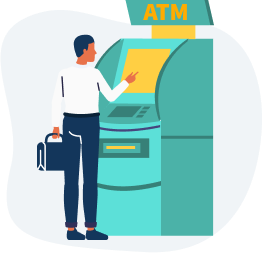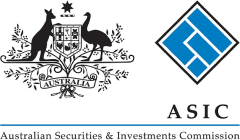Currency in India
A Travel Money Guide to India
India is one of our favourite places in Asia for the breathtaking beauty of the Taj Mahal, the glorious Goa beaches, and its interesting cities like Rajasthan, Mumbai and Varanasi.
To get the most out of your trip, it’s a good idea to learn everything you can about the local currency and payment options before you go.
The currency used in India
The currency they use in India is the Indian Rupee, which has the international code INR and the symbol ₹. Indian Rupee banknotes have 7 denominations: ₹5, ₹10, ₹20, ₹50, ₹100, ₹500 and ₹1000.
The coins are made up of ‘paise’ and rupees. There are 6 coin denominations in India: ₹1, ₹2, ₹5, p10, p25 and p50.

Using Your Bank Card in India
Most Indian businesses are well set up to receive card payments. Some of the best travel money cards include debit, credit and prepaid cards. But before you use your bank card willy-nilly, it’s worth reading up on the fees and charges you might incur.
Debit Cards
You’ll probably want a debit card if you plan to withdraw money from an ATM. While you may also be able to pay with a debit card in some businesses in the major destinations, you might discover some hefty fees on your account summary.
Depending on your bank, you could be hit with fees for foreign ATM withdrawals or currency conversions. But some banks are better than others; we recommend checking out Wise, ING and Revolut, all of which have travel-friendly debit cards that waive these charges.


Credit Cards
Credit cards can come with some enticing perks, including added security, loyalty programs, and even free travel insurance.
But are they worth it?
Major local businesses, including hotels, restaurants, airline offices, and department stores, accept credit cards. But you might have to pay a surcharge.
Mastercard and Visa are widely accepted. You may also be able to use your American Express card, though local ATMs won’t accept them.
Just be aware of additional charges you may incur for foreign transactions. These could include:
- International transaction fees
- High exchange rate margins
- ATM fees
- Potential ‘cash advance fees’ if you use an ATM
If you still prefer credit cards over any other payment, consider going with a company that offers cards that waive certain travel fees. Bankwest Platinum and 28 Degrees both have travel-friendly cards.
Prepaid Travel Cards
The biggest advantages of prepaid travel cards are that you can lock in a favourable exchange rate. You also get a handy back-up card.
Just remember that while they are convenient, you could end up paying a long list of hidden fees. Many travel cards still impose:
- Currency conversion fees
- Uncompetitive exchange rates
- International ATM withdrawal fees
- Initial load fees
- Reload fees
- Inactivity fees

How to Buy Indian Rupee Before You Go
There’s a certain reassurance that comes with stepping off the plane (or cruise ship) already cashed up with Indian Rupee.
Buying Indian Rupee before you leave Australian shores isn’t just convenient. It can also save you money. But it all depends on where you get your Indian Rupee in Australia. There are 3 main options:
- Buy INR online and have it delivered or collect it in-store
- Swap Indian Rupee for Australia dollars from a money changer
- Buy your Indian currency at your home airport
Try S Money or a similar online currency exchange store to get rates that reflect the comparisons you see on XE or Google.
If you choose online delivery or in-store pickup, check the processing time. Some exchange companies with online options suggest you allow between two and five days to process currency.
Prefer in-store currency exchange? Head to the CBD of your nearest city for the most competitive exchange rates; suburban bureau de change outlets tend to have poorer rates and fees.
Currency exchange counters in Australia’s airports are infamous for their atrocious exchange rates. Avoid them if you can.
The Average Cost to Travel Around India
To get the most out of your time in India, you’ll want to create a budget to work out how much spending money for India you will need and make sure your savings stretch as far as possible.
To give you an idea of a reasonable budget, we’ve listed the average prices of some common items and experiences you’ll have while in India.
The average daily travel budget in India is about $95. Some of the expenses you might be looking at include:

$50
A room in a guesthouse

$20
Two-course meal at a nice restaurant

$3
A local beer

$3
Public Transport One Way

$16
Entrance to the Taj Mahal
How to Exchange Currency in India
Places like Bangalore, and Jaipur receive great numbers of tourists, so there are facilities to cater to money exchanges. Beyond these major destinations, it’s best to get cash before you venture into remote territory.

ATMs
There are lots of ATMs in India, ICICI, IDBI and Axis bank are commonly available in most tourist spots. If you are travelling to rural areas, it is advisable to carry cash in cash you cant find an ATM.
The ATMs are similar to the ones in Australia and you may have to select English as your language or it may automatically show English for you. Some ATMs do have a daily withdrawal limit and always remember to cover your hand as you punch in your pin to prevent card skimming.
Depending on your bank, you may have to pay for overseas ATM withdrawals and currency conversions. To reduce the amount you’ll pay in fees, try to withdraw just the right amount of money you’ll need for the duration of your trip.
Don’t forget: Let your bank know you’re travelling! If they detect a foreign transaction but aren’t aware you’re overseas, they could end up freezing your card.
Currency Exchange in India
There are lots of money changers in India, most of them have a sign stating “Money Changer” out the front and a board with exchange rates within the store. Money changers in India tend to offer marginally better rates than banks as many banks charge high flat fees of per transaction. In addition, banks only exchange currencies on weekdays.
Furthermore, you can exchange money at the international airport or at your hotel if you are desperate, as these places have the worst exchange rates. If you can plan not to change money at the airport or hotel you will save money.


Travellers Cheques
Not worth the bother! Travellers cheques are so outdated, very few banks even accept them any more.
They can’t be used as direct payment, so the only way to use them once you’re in the country is to swap them for currency at a bank or bureau de change office. Even then, very few banks will accept travellers cheques if you don’t have an account with them. And exchange services apply exorbitant fees and rates to them.


